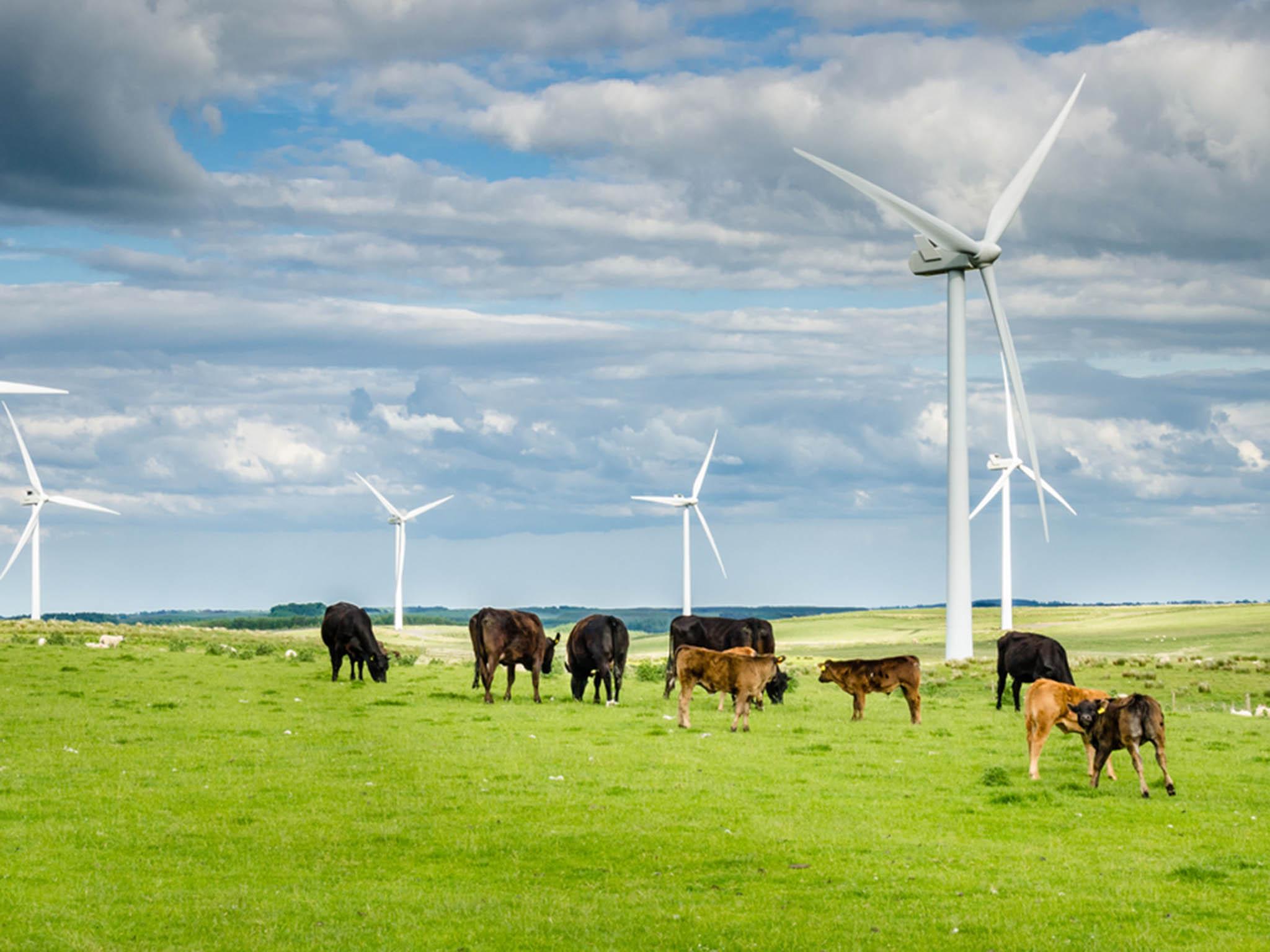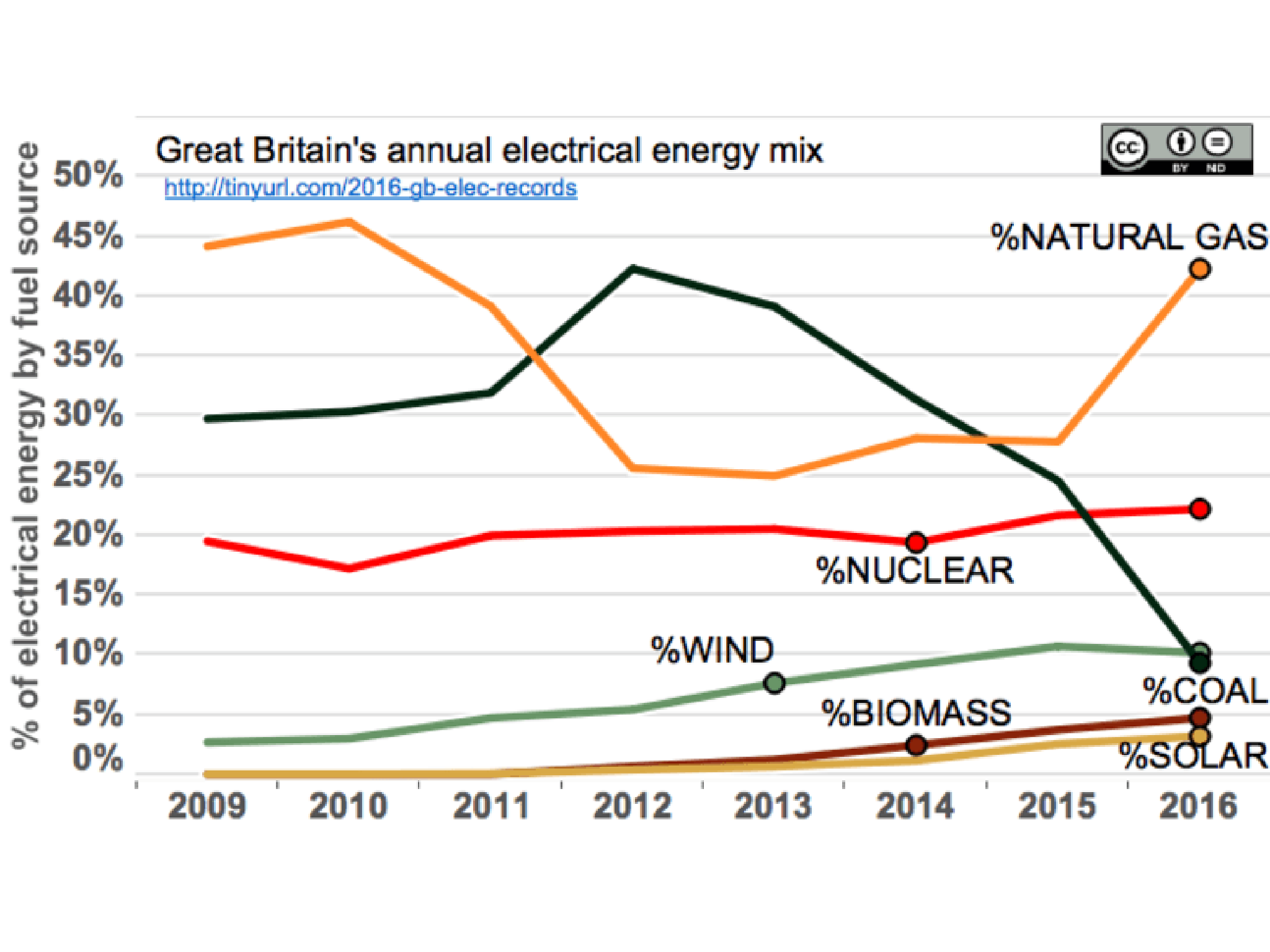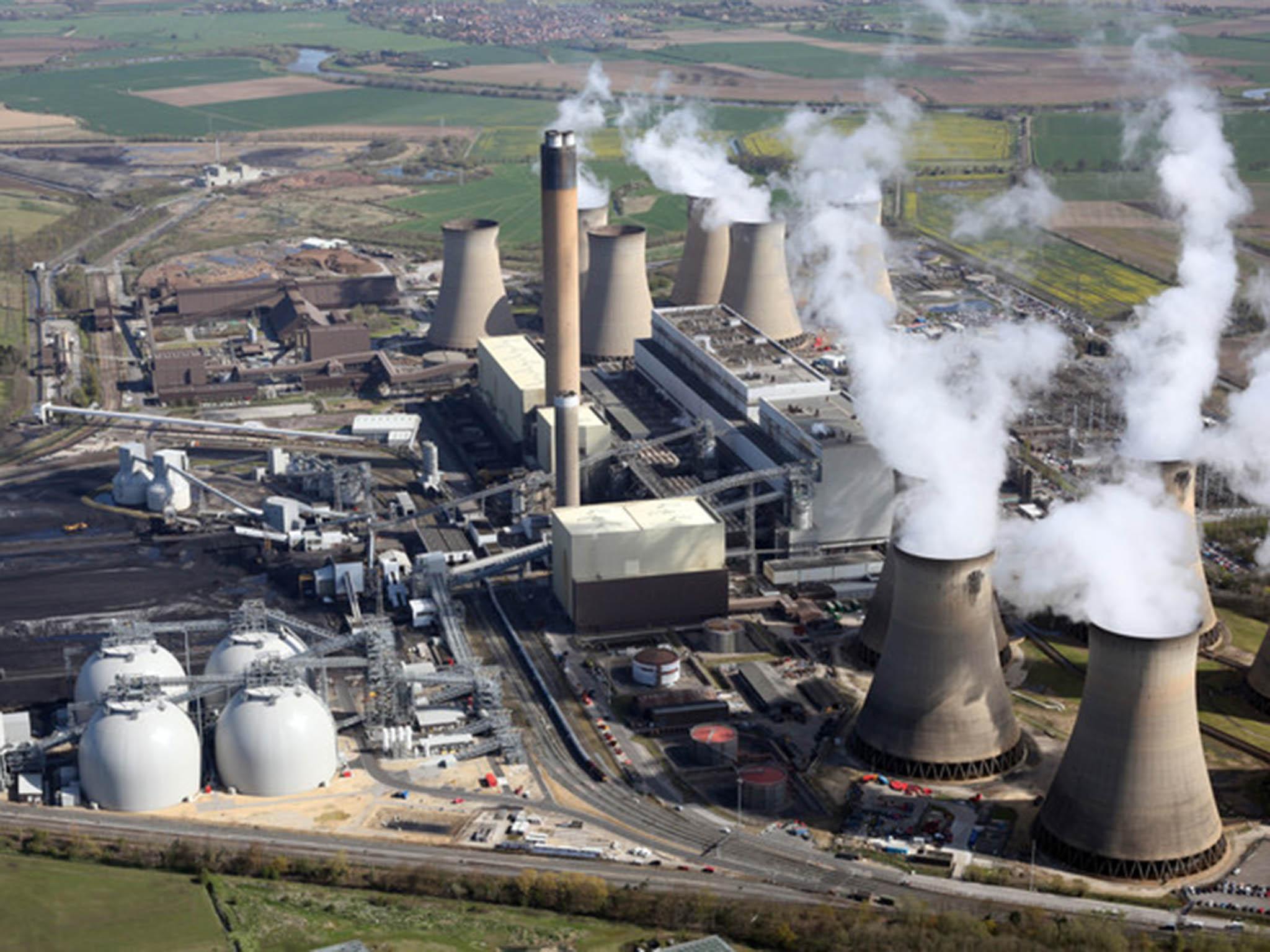The year coal collapsed: 2016 was a turning point for Britain’s electricity
Electricity in England, Scotland and Wales is now the cleanest it has been in 60 years

Your support helps us to tell the story
From reproductive rights to climate change to Big Tech, The Independent is on the ground when the story is developing. Whether it's investigating the financials of Elon Musk's pro-Trump PAC or producing our latest documentary, 'The A Word', which shines a light on the American women fighting for reproductive rights, we know how important it is to parse out the facts from the messaging.
At such a critical moment in US history, we need reporters on the ground. Your donation allows us to keep sending journalists to speak to both sides of the story.
The Independent is trusted by Americans across the entire political spectrum. And unlike many other quality news outlets, we choose not to lock Americans out of our reporting and analysis with paywalls. We believe quality journalism should be available to everyone, paid for by those who can afford it.
Your support makes all the difference.Socially and politically, 2016 was a momentous year for Britain. It was also a record-breaking year for energy and the environment, but thankfully for all the right reasons. Britain’s electricity was the cleanest it had been in 60 years, as coal collapsed and renewables rose to record levels
Less than 10 per cent of British electricity – with Northern Ireland is calculated separately – was generated from coal, down from more than 40 per cent in 2012. This is the lowest share coal has ever provided in the system’s history of more than a hundred years, and the lowest absolute quantity burnt since the start of the Second World War.
In fact, at 10 per cent of generation, wind farms produced more electricity, a significant milestone in Britain’s low-carbon transition. Natural gas has picked up most of the slack and posted its best year since 2010. Nuclear, solar and biomass are all also on the rise.
The demise of coal means British carbon emissions from electricity generation have halved over the past four years. This is not ‘green-washing‘ or creative accounting. When factoring in the emissions released abroad from producing electricity and biomass that is then imported, Britain’s electricity sector released 82 million tons of CO2. The last time annual emissions were below 100 million tons was as far back as 1955.

Great Britain’s power sector carbon emissions since 1920. Author calculations. Data source National Grid and Elexon
Emissions were 25 per cent lower than in 2015, so changes in the electricity mix mean that each Briton effectively produced 400kg less CO2 – without lifting a finger. The carbon content of a unit of electricity has fallen to 277 grams per kilowatt hour, beating the strict pathway set out in the Climate Change Act’s Carbon Budgets by up to four years.
The coal collapse led to a number of other milestones being reached, including solar generation being greater than coal over the months of May, July and August. For the first time since the National Grid was established in the 1930s, there were times with no coal-generation at all. Since the four-hour break in coal-generated power that happened on 10 May last year, there have now been 200 coal-free hours. Scotland’s power sector is now entirely coal-free, after its last station at Longannet closed in March.
Electricity demand continued its downwards trend, and now stands 20 per cent lower than its 2005 peak, despite a population rise of five million. So demand is back to levels seen in the late eighties, resulting in both reduced fuel-burning and emissions.
Wind had a solid year, but annual output fell slightly as the number of storms of late 2015 were not repeated in the 2016 winter. Additional wind farms were deployed, and Britain’s capacity reached a new high of 14.33 gigwatts. This meant that, during Storm Barbara just before Christmas, wind was able to set new records for weekly, daily and hourly output, peaking at 5.30pm on 23 December when it generated 10.7gW of electrical power (nearly a quarter of the national total at a peak time of day and year).

Solar also had a solid year, with installed capacity surpassing the 10gW mark, despite fears about subsidy cuts. Throughout the year it amounted to 3.2 per cent of all British output, though at its peak on 12 May, it nearly reached 20 per cent.
Biomass also posted its highest ever output at 14,000 gigawatt hours over the year, up 25 per cent on 2015, and almost double its output in 2014. Output should continue its upwards trend now that the third coal unit at Drax power station in Yorkshire has permission to be converted to biomass. Tthis means it will burn wood pellets imported from the US – a practice more sustainable than it sounds.
Renewables has seen a dramatic rise in Great Britain, with just over 28gW of wind, solar and biomass installed – around 1kW for every household. This is five times more than just five years ago, and as of December, Britain has more renewables (combined) than any other type of generation, beating even gas turbines.
Putting together renewables, nuclear, and imports from France – which are almost all nuclear and hydro – Britain hit the milestone of supplying more than half its electricity from low carbon sources in the summer of 2016, up from 20 per cent in 2010.
It seems Britain’s low-carbon transition is proceeding at full force. Renewable capacity and output are breaking new records, a combination of carbon taxes, fuel prices and clean-air legislation have forced coal down to levels not seen for two generations, and demand is falling thanks to improving energy efficiency. After a decade of relative stagnation in the 2000s, the 2010s have marked a dramatic shift, resulting in emissions halving in just four years. A bit of good news to start 2017.
Grant Wilson, teaching and research fellow , environmental and energy engineering research group, chemical and biological engineering, University of Sheffield, Iain Staffell, lecturer in sustainable energy, Imperial College London. This article first appeared on The Conversation (theconversation.com)
Join our commenting forum
Join thought-provoking conversations, follow other Independent readers and see their replies
Comments